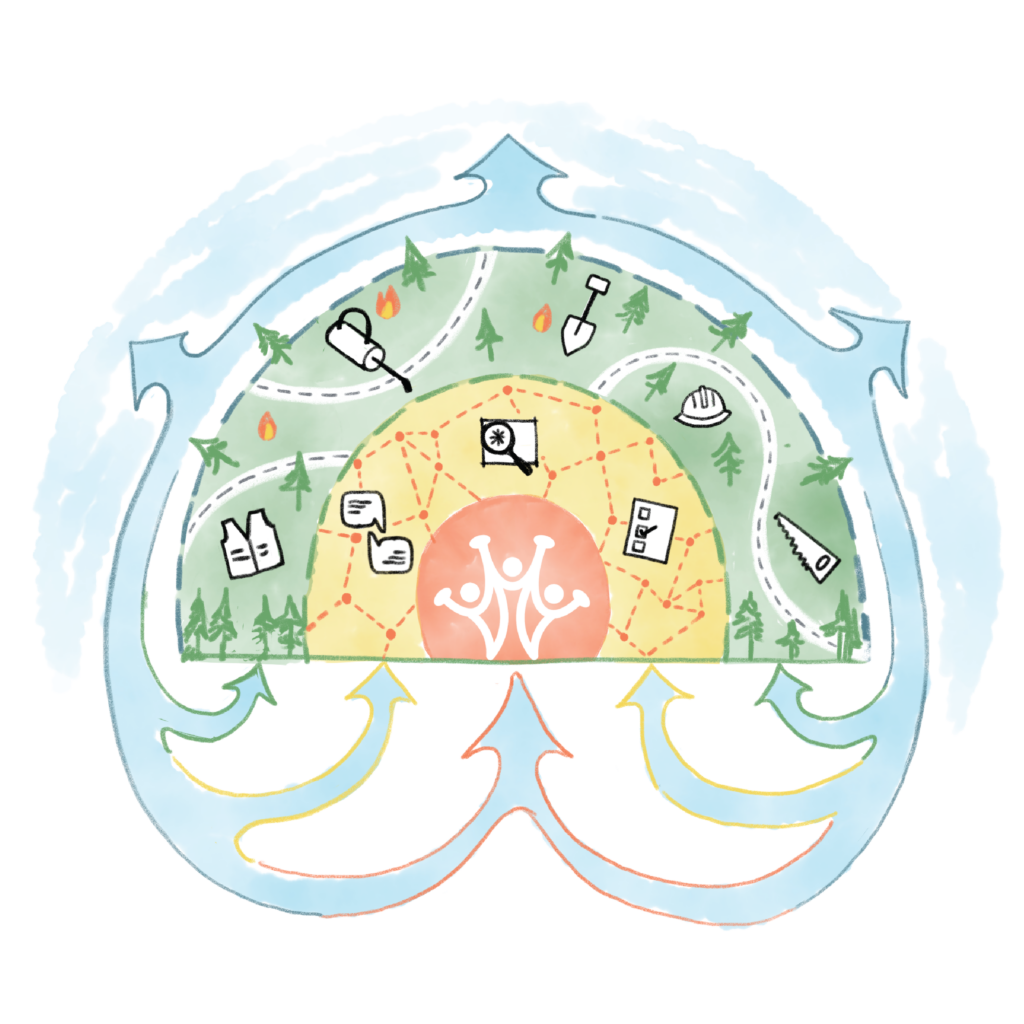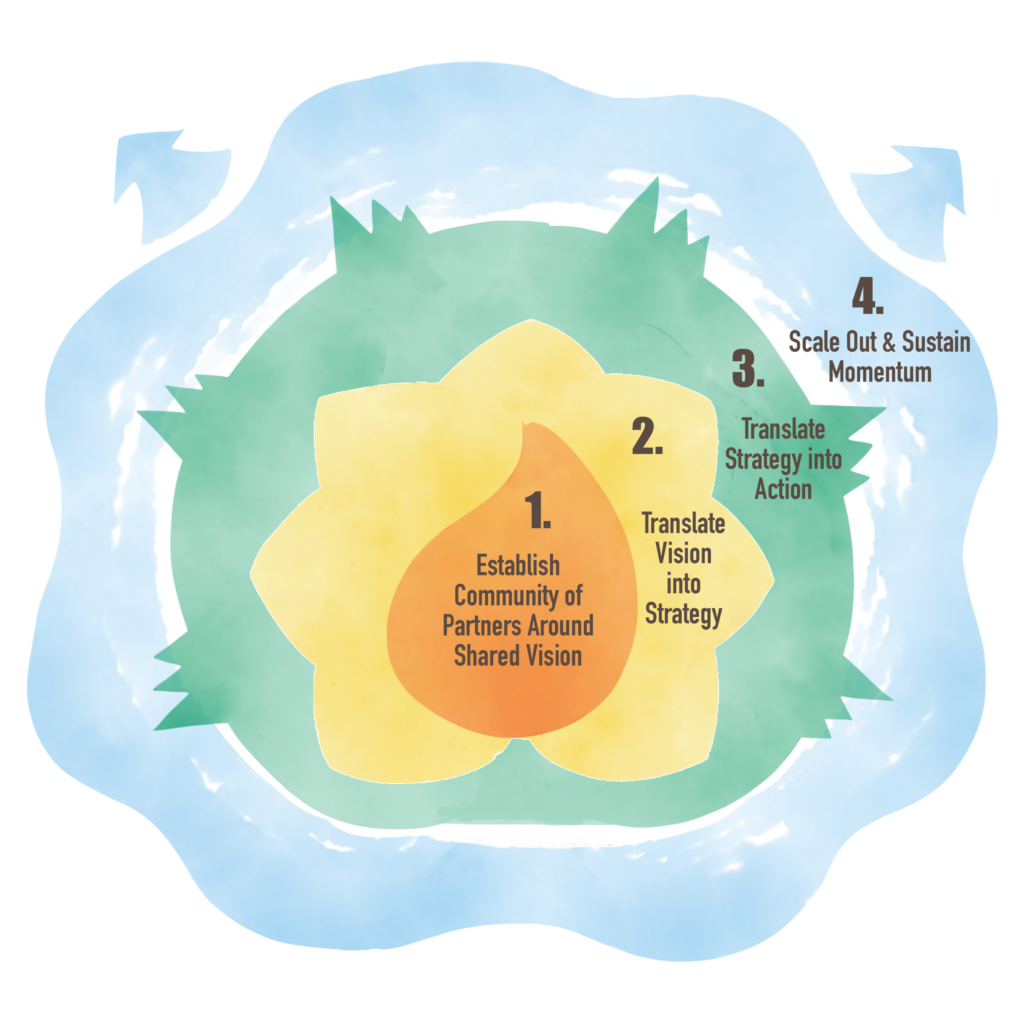By Hannah Brown and Ch’aska Huayhuaca
Colorado Forest Restoration Institute (CFRI), Colorado State University

image credit: LVBrown Studios, LLC
Imagine a future in which, when a wildland fire ignites and spreads towards highly valued resources and assets, it burns through the area with minimal damage and loss. Reduced fuel loads result in less smoke, and evacuations (if needed) are brief. Local responders and managers have sufficient resources to keep the fire from growing beyond a Type 3 Incident, and have options to let the fire achieve ecological benefits. All this because land managers, fire responders, and community leaders across all affected jurisdictions had already collaboratively planned and carried out mitigation actions that actually made a difference on wildfire behavior.
No single organization can achieve landscape-scale outcomes like these on their own, which is why collaboratives are increasingly recognized as important for addressing large landscape, cross-boundary challenges to forest resilience. Moreover, federal and state agencies are increasingly expected to work with collaborative initiatives to meet national- and state-level policy goals related to wildfire mitigation. Successful collaboratives can help to prepare landscapes and communities to receive and recover from wildland fire. However, it takes time and resources for collaboratives to get to a point where they can bring the right people together, co-develop strategies for solving problems, coordinate on-the-ground operations, and facilitate science-informed, continuous learning. Collaboratives need resources that help them do the work of collaboration more efficiently and effectively.
The Southwest Ecological Restoration Institutes (SWERI) and the Center for Collaborative Conservation at Colorado State University (CCC) recently published a concept paper on the Stages of Collaborative Readiness Framework. Informed by the authors’ collective research experience, the framework emerged from practice within the Northern Colorado Fireshed Collaborative to guide funders and decision-makers who allocate resources to collaborative efforts, and help collaboratives articulate and justify their own capacity and funding needs. The Collaborative Readiness Framework is already being applied to help place-based collaboratives and community-connected partners evaluate their own readiness to implement projects and identify capacity needs, as well as to guide investment when allocating resources among partners.
The premise is simple: collaborative endeavors are not all the same, each collaborative sits within a unique physical, social, and economic landscape, and their challenges and opportunities can vary widely. Collaboratives evolve over time, and they require different resources and support as they develop. At the same time, funders generally want to invest in proven success. This can result in inequitable distribution of resources, as well-resourced collaborative groups continue to receive funding and support, and early-stage and under-resourced collaboratives in landscapes with high wildfire risk are left behind. The new Framework encourages more equitable investments in these collaboratives by providing stage-appropriate benchmarks for tracking progress and success of collaboratives as they evolve in their ability to prepare systems to live with wildfire.

image credit: LVBrown Studios, LLC
The Framework can help collaboratives understand and communicate how “ready” they are for various types of work and projects, and what outcomes and products they can reasonably expect to produce at various stages. This new resource can give collaborative practitioners a research and practice-informed structure to engage in self-assessment and adaptation, guide resource allocation between collaborative members and partners, and inform reasonable expectations and outcomes at different collaborative capacity levels.
For more information, see the presentation below, or check out the full report and summary.

